MELAKA/PUTRAJAYA, Malaysia -- “Don’t mess with Melaka.”
Flags bearing the English campaign slogan were blowing in the wind in every corner of Melaka, as scores of students from Southeast Asian countries and Korea explored the historic Malaysian city to learn from its experience and know-how in an eco-friendly way of urban development.
The catchphrase, which urges Melakan citizens to reduce littering in the UNESCO World Heritage Site, is a reflection of the city’s strong drive to make it inclusive, resilient and sustainable not only for today’s population, but for future generations.
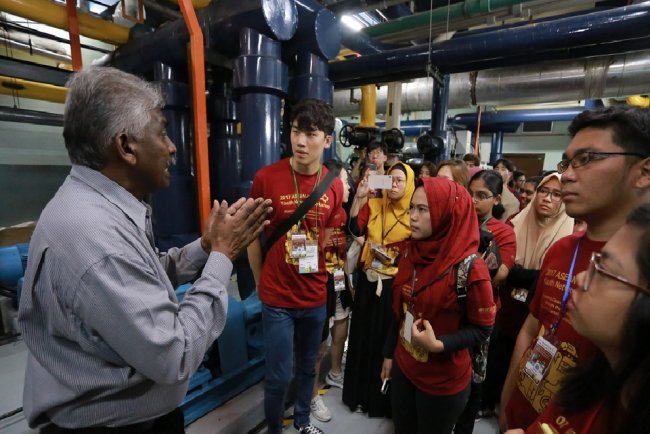 |
Students look around the energy-saving facilities on the rooftop of Ramada Hotel Melaka as part of the 2017 ASEAN-Korea Youth Network Workshop in Melaka, Malaysia, on July 9. (ASEAN-Korea Centre) |
“I learned how the effective management of the systems can turn a city into an eco-friendly city, with the backing of government’s measures and policies,” Zaw Zaw Aung, a 22-year-old student from Myanmar, told The Korea Herald.
“It is sad many cities around the world are losing their culture, but Melaka has been doing an excellent job in incorporating its local culture and environment in a modern style to make it more sustainable.”
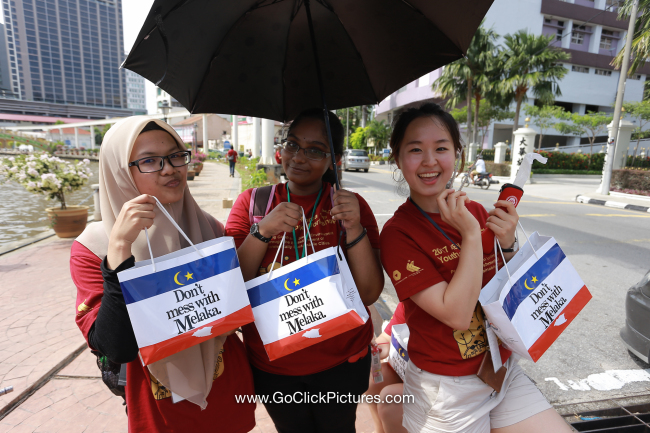 |
Three students carry a bag bearing the slogan "Don't mess with Meleka" in Melaka, Malaysia, on July 9. (ASEAN-Korea Centre) |
Along with the Myanmarese student, some 40 young people from South Korea and four countries of the Association of Southeast Asian Nations -- Myanmar, Indonesia, the Philippines and Malaysia -- joined a five-day trip in Malaysia last month, the second part of the 2017 ASEAN-Korea Youth Network Workshop organized by ASEAN-Korea Centre and International Youth Centre.
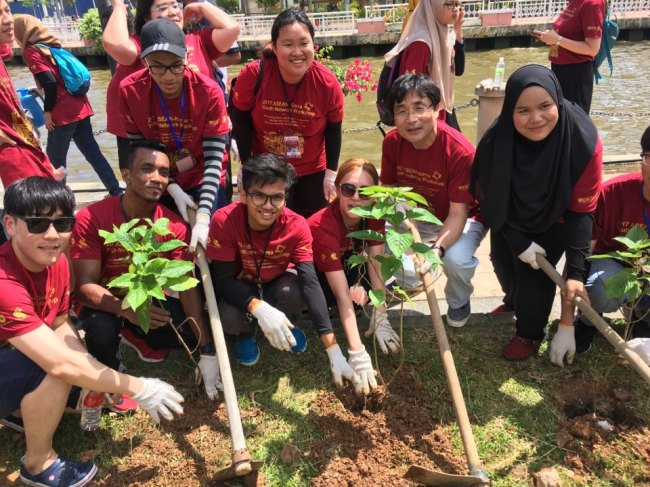 |
ASEAN-Korea Centre's Secretary General Kim Young-sun and tudents plant trees along a river as part of the 2017 ASEAN-Korea Youth Network Workshop in Melaka, Malaysia, on July 9. (Ock Hyun-ju/The Korea Herald) |
By taking part in lecture, field trips and cultural activities, they not only rediscovered a meaning of sustainable development in terms of economic growth, environmental protection and social inclusion, but also forged strong networks to continue their partnership in building sustainable cities in Asia.
Making cities sustainable is considered a crucial part of meeting the United Nations’ sustainable development goals as more than half of the world’s population -- some 3.5 billion people -- live in urban areas today and cities are the primary contributors to greenhouse gas emissions.
The role of developing countries, especially the 10 ASEAN countries, is vital as it has a combined population of 900 million people as of 2016, some 12 percent of the world’s population, and urbanization is rapidly taking place in their cities.
Malaysia is already positioning itself at the forefront of developing cities in a sustainable way by shifting to green energy, improving public transport and dispersing population nationwide.
Melaka, a trading hub in Asia in its heyday, is one of the pioneering green cities promoted by the Malaysian government. Through the river rehabilitation project, it improved the irrigation system to clean the muddy water and prevent flooding.
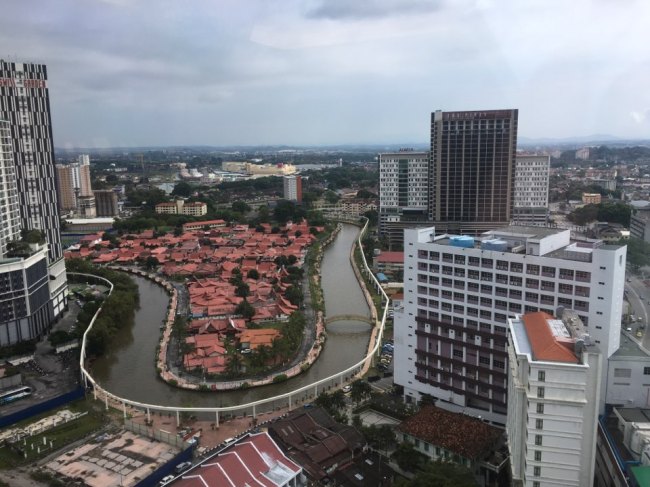 |
Melaka, Malaysia (Ock Hyun-ju/The Korea Herald) |
The participants looked around Ramada Plaza Melaka, which earned a Green Apple Award from the municipality, for its efforts to adopt an eco-friendly way of business, picked up litter and planted trees along the Melaka river. They also visited the city‘s solar farm at the Melaka World Solar Valley.
But going green in terms of energy consumption is not all the city has to offer.
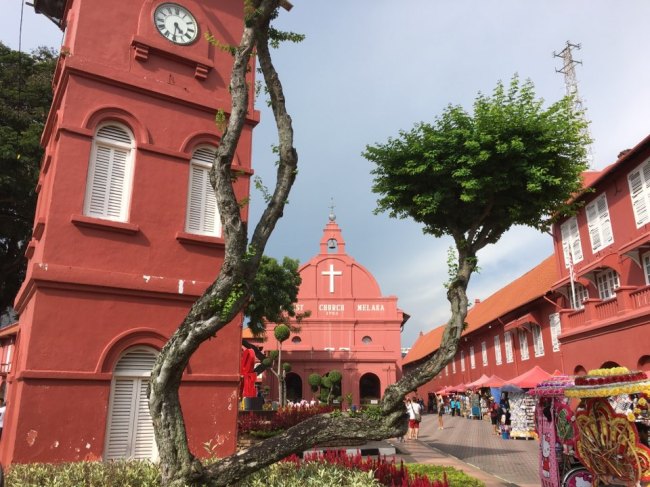 |
Christ Church in Melaka, Malaysia (Ock Hyun-ju/The Korea Herald) |
It has turned itself into a popular tourist spot with its rich history and multicultural heritage affected by trading and cultural exchanges between East and West. It has well-preserved architecture which originated in the Malay sultanate in the 15th century and the colonial era under Portuguese and Dutch.
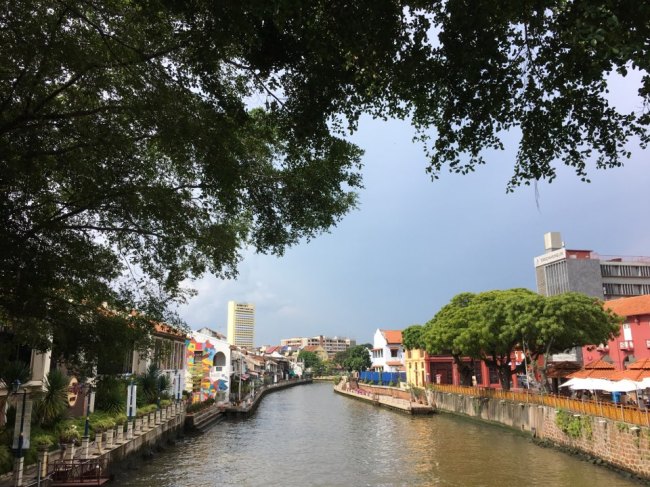 |
Melaka riverside, Malaysia (Ock Hyun-ju/The Korea Herald) |
“As for city planning, I think that Korea should learn to protect the environment and cultural heritage to make cities sustainable. Melaka’s environment and culture are well preserved, while I think that Korea tends to focus more on destroying and re-building things,” said Im Chae-hyeon, 25, from Busan.
The students also visited Putrajaya, the federal administrative capital of Malaysia, which became a sustainable low-carbon city with a goal of reducing its greenhouse emissions intensity by 60 percent by 2025, compared to 2012 levels.
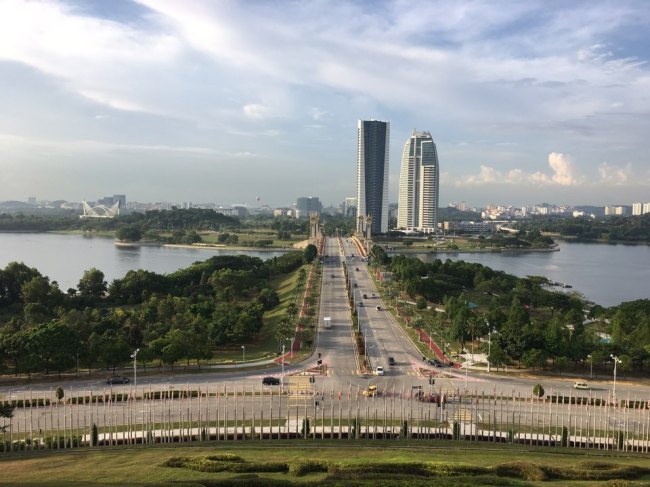 |
Putrajaya, Malaysia (Ock Hyun-ju/The Korea Herald) |
In Putrajaya, buildings were constructed in accordance with green building standards. Solar photovoltaic systems are installed and electric buses are run. It also has the country’s first man-made wetland in the city.
“Putrajaya’s buildings look all different. I felt like Malaysians have made efforts to conserve diversity in terms of building designs rather than focus on applying advanced technology,” said Cho Young-ju, a 22-year-old student from Korea.
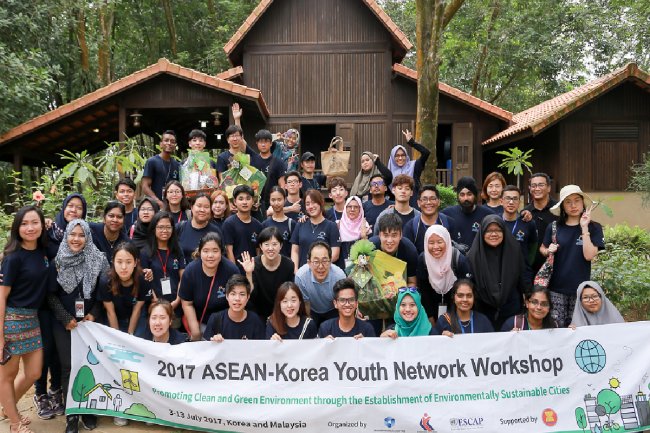 |
Students post for a photo at Wawasan Park, Putrajaya, Malaysia, on July 11. (Ock Hyun-ju/The Korea Herald) |
“I think diversity is an important factor in making cities sustainable. Technology can be copied, but diversity, perception and culture cannot.”
Malaysia is one of the most multi-ethnic, multi-cultural and multi-lingual society, with Malays, Chinese and Indians making up the largest ethnic groups. With its culture stemming from indigenous tribes, it has incorporated suitable elements from Chinese, Indian, Persian, Arabic and western cultures and created its own.
“Malaysia’s sustainable cities are telling a story,” the center’s Secretary-General Kim Young-sun said, noting that Korea’s signature smart city Incheon is rather focused on promoting cutting-edge and energy-saving technology.
“What makes sustainable cities truly sustainable is the cities’ history and culture, along with technology and environment. I hope that Korean students learn from Malaysia where diverse cultures coexist in harmony,” he said.
“I hope that youths from the 10 ASEAN countries and Korea work together, form friendships and grow as future leaders through this program,” Kim added.
In the first part of the workshop held from July 3-7 in Seoul, some 80 students visited facilities such as a sewage treatment plant and a tidal power plant in Incheon. They also received lectures on ASEAN-Korea relations and sustainable development from experts.
Under the theme of “Promoting Clean and Green Environment through the Establishment of Environmentally Sustainable Cities,” students toured Korea and Malaysia from July 3 to 13.
For the participants, it was a chance to realize the importance of continued exchanges from ASEAN countries and Korea.
“The experience in both countries helped me to figure out how we can achieve a sustainable city development for our country,” said Nur Fazliyana Binti Yusoff, 21, from Malaysia.
“Malaysia can learn from South Korea’s advanced technology in saving energy and environment. And Korea can learn from Malaysia‘s green environment (policy) and use of nature,” she said.
At the closing ceremony, five groups of students made presentations on ways to improve cities they chose. Some chose to transform Indonesia’s capital Jakarta into a green city, others chose to make Jeju Island and Incheon environmentally-sustainable.
The top award was given to the team which suggested ideas for Jeju Island now grappling with the soaring number of tourists and environmental damage by the tourism boom. Some of their ideas for the municipality was to set up more bike rental stations, allow ride-sharing application like Uber and encourage use of electric rental cars.
The ASEAN-Korea Centre, an intergovernmental organization established in 2009 to enhance social, economic and cultural exchanges between ASEAN countries and Korea, has held an annual youth workshop on environmental issues since 2013.
By Ock Hyun-ju / The Korea Herald Correspondent (
laeticia.ock@heraldcorp.com)















